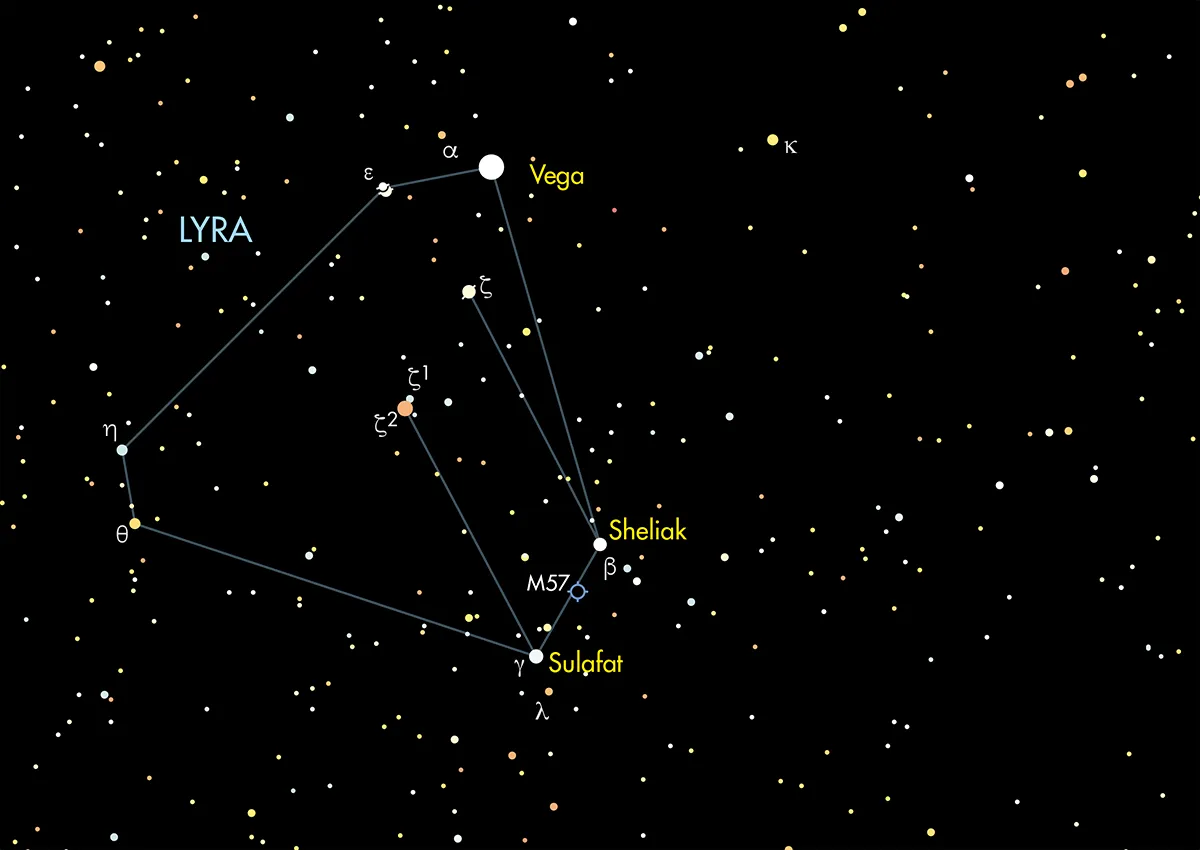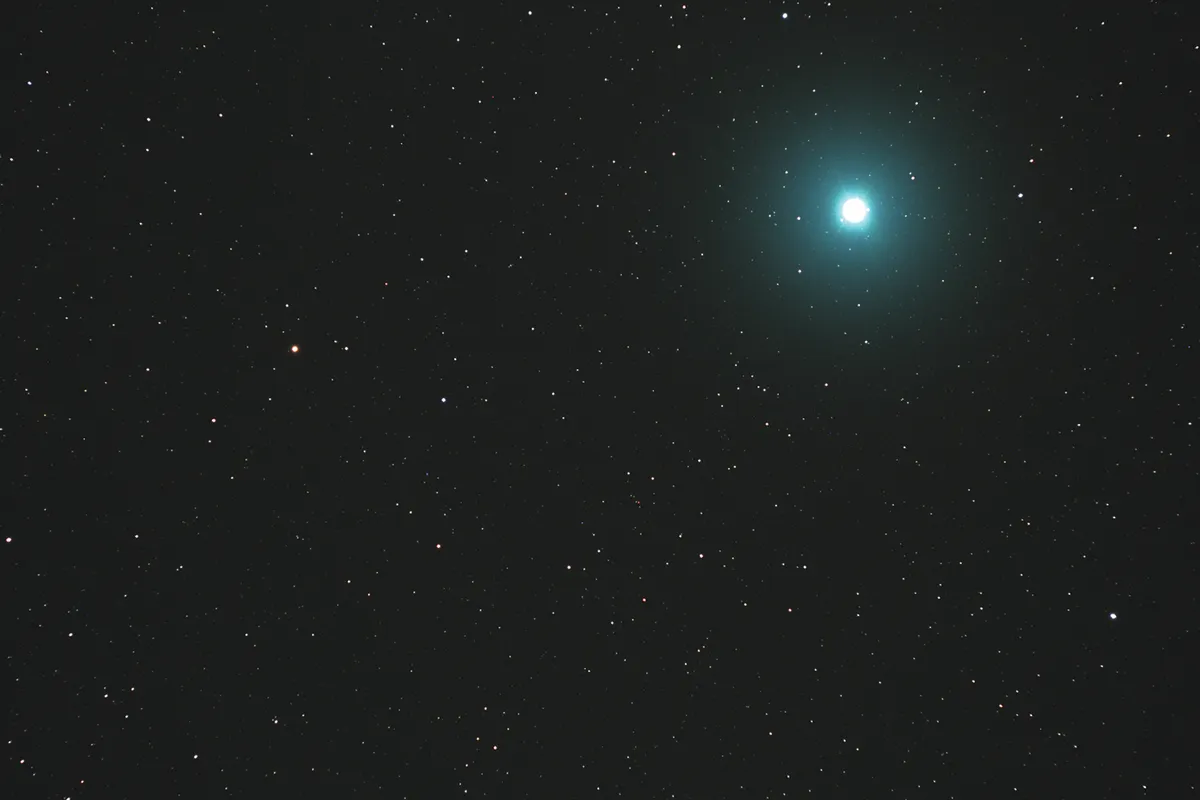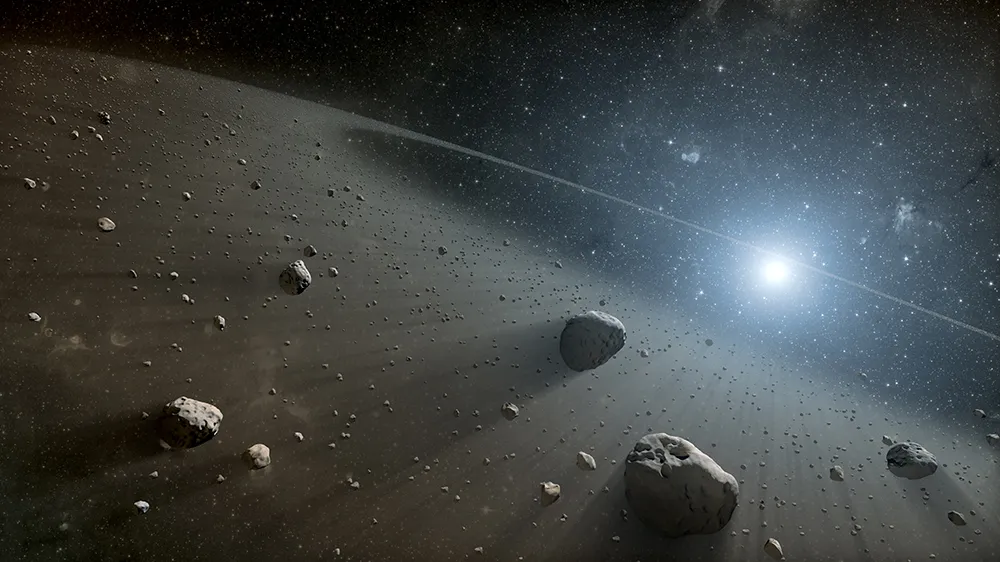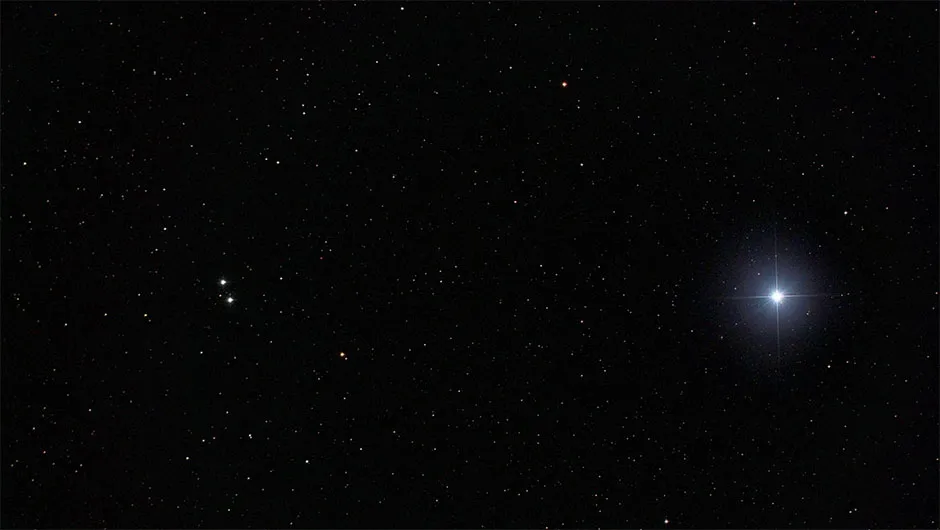Vega (Alpha (α) Lyrae) is a familiar sight during the summer months, riding high in the sky, passing virtually overhead as seen from the UK.
It’s most obviously prominent in July and August when the length of the night starts to extend again following the northern hemisphere’s summer solstice on 21 June.
It’s a bright star and the first one visible in the summer sky as darkness falls.

Vega is the alpha star of Lyra, the Harp, and marks the northwest vertex of the large and dominant asterism known as the Summer Triangle.
It’s a relatively near neighbour of the Sun, lying just 25 lightyears away, and for a long time marked the zero point of the magnitude scale at all wavelengths.
This scale is used in astronomy to denote the brightness of an object and Vega was used as the baseline value.
In modern times the value is calculated numerically and Vega now has the non-zero magnitude of +0.026.

Vega is a hot, main sequence star of spectral type A0V. It is thought to be roughly halfway through its predicted main sequence lifetime of a billion years with an estimated age of around 455 million years.
When it leaves the main sequence in approximately half-a-billion years it will become a red giant before finally shedding mass to end its life as a white dwarf.
Vega's mass and diameter are roughly twice that of the Sun.

From Earth we get to look down on one of Vega’s poles, its spin axis tilted by around 5° to our line of sight.
Vega spins with an estimated rotational velocity of 236.2 km/s. This produces an equatorial bulge and thus gives a false size to the star when measured directly.
An infrared excess was observed by the Infrared Astronomical Satellite (IRAS) in 1983, suggesting there was a ring of debris around the star, possibly the site of planetary formation.
Follow-up observations by Spitzer in 2005 produced high-resolution infrared images of the dust around Vega.

This guide originally appeared in the June 2018 issue of BBC Sky at Night Magazine.
